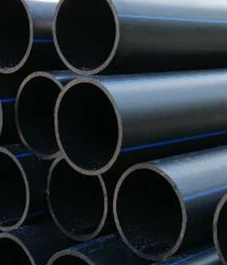Dez . 15, 2024 14:08 Back to list
Techniques for Joining HDPE Pipes Efficiently and Effectively in Various Applications
The Art of HDPE Pipe Jointing Techniques and Best Practices
High-Density Polyethylene (HDPE) pipe systems have gained popularity in various industries due to their durability, flexibility, and resistance to corrosion and chemicals. One crucial aspect of ensuring the efficiency and longevity of HDPE piping systems is effective jointing. Proper jointing techniques are vital in preventing leaks, ensuring structural integrity, and facilitating ease of maintenance. In this article, we will explore the various methods of HDPE pipe jointing and best practices to adhere to during installation.
Understanding HDPE Pipe Jointing Methods
There are several methods for joining HDPE pipes, each with its advantages and applications
. The most commonly used jointing techniques include1. Butt Fusion This is perhaps the most ubiquitous method for joining HDPE pipes. It involves heating the pipe ends until they become molten and then pressing them together, allowing them to fuse as they cool. Butt fusion is highly reliable and produces a joint as strong as the pipe itself. It is ideal for large diameter pipes and is commonly used in water supply systems and gas distribution lines.
2. Electrofusion This method utilizes electrical resistance to heat fittings that are fused onto the pipes. The fittings contain embedded heating elements that melt the interface between the pipe and the fitting, resulting in a strong bond once cooled. Electrofusion is particularly advantageous in situations where butt fusion is impractical, such as in constrained spaces. This method is widely used in wastewater applications and for joining smaller diameter pipes.
3. Socket Fusion Similar to butt fusion, socket fusion involves heating the outside of the pipe and the inside of the fitting simultaneously. After heating, the pipe is inserted into the fitting, creating a strong joint. Socket fusion is typically used for smaller diameter pipes and is popular in plumbing and irrigation applications.
4. Mechanical Joining This method involves using mechanical fittings, such as couplings or flanges, to join HDPE pipes. Mechanical joints can be advantageous in cases where other fusion techniques are either impractical or require specialized equipment. They allow for easier disassembly and maintenance, making them suitable for temporary installations or systems requiring frequent changes.
Best Practices for HDPE Pipe Jointing
hdpe pipe jointing

Regardless of the jointing method used, several best practices should be followed to ensure a successful and long-lasting connection
1. Surface Preparation Always ensure that the pipe ends are clean and free from dust, dirt, and grease. Any contaminants can compromise the integrity of the joint, leading to potential leaks.
2. Proper Equipment Use the appropriate tools and equipment designed specifically for HDPE jointing. Ensure that fusion machines are calibrated correctly and maintained regularly to guarantee optimal performance.
3. Temperature Control Monitor the heating temperatures carefully during the fusion process. Each jointing method has specific temperature requirements, and deviations can lead to weak joints or improper fusion.
4. Join within Time Limits Follow the manufacturer’s guidelines regarding the time allowed for joining after heating. Too much time can result in cooling of the heated surfaces, affecting the joint’s quality.
5. Quality Assurance After jointing, visually inspect the connections for any signs of overheating or underheating. Conduct pressure testing where applicable to ensure there are no leaks in the system.
Conclusion
HDPE pipe jointing is a critical aspect of constructing reliable and efficient pipe systems. By understanding the available techniques and adhering to best practices during installation, professionals can ensure robust, leak-free joints that will stand the test of time. As industries continue to expand their use of HDPE piping, knowledge of proper jointing methods becomes increasingly important for maintaining infrastructure integrity and preventing costly repairs down the line.
-
High-Quality HDPE Sheet | Durable Plastic Panels
NewsAug.06,2025
-
High-Precision PVC Rigid Sheets for Vacuum Forming | AI-Optimized
NewsAug.05,2025
-
Durable PVC-M Water Supply Pipes | 60-Year Life
NewsAug.04,2025
-
Premium HDPE Water Supply Pipes: Durable & Leak-Proof
NewsAug.03,2025
-
Premium PVC-M Water Supply Pipe - Durable & Efficient
NewsAug.02,2025
-
HDPE Drainage & Irrigation Pipe - Durable, Efficient Solutions
NewsAug.01,2025

